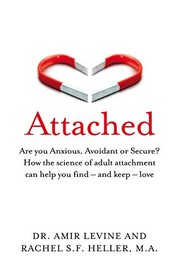Attached
By Amir Levine“Attachment principles teach us that most people are only as needy as their unmet needs. When their emotional needs are met, … they usually turn their attention outward. This is … the dependency paradox.”—Amir Levine, Attached. Highlighted
“This is an important lesson for someone with an anxious attachment style: If you just wait a little longer before reacting and jumping to conclusions, you will have an uncanny ability to decipher the world around you and use it to your advantage.”—Amir Levine, Attached. Highlighted
“…Studies have found that faced with a stressful life event, such as divorce, the birth of a severely disabled child, or military trauma, avoidants’ defenses are quick to break down and they then appear and behave just like people with an anxious attachment style.”—Amir Levine, Attached. Highlighted
“… Studies show that once we become attached to someone, the two of us form one physiological unit. Our partner regulates our blood pressure, our heart rate, our breathing, and the levels of hormones in our blood. … The emphasis on differentiation that is held by most of today’s popular psychology … does not hold water from a biological perspective.”—Amir Levine, Attached. Highlighted
“If you want to take the road to independence and happiness, first find the right person to depend on and travel down it with them.”—Amir Levine, Attached. Highlighted
“Getting attached means that our brain becomes wired to seek the support of our partner by ensuring the partner’s psychological and physical proximity. If our partner fails to reassure us, we are programmed to continue our attempts to achieve closeness until the partner does.”—Amir Levine, Attached. Highlighted